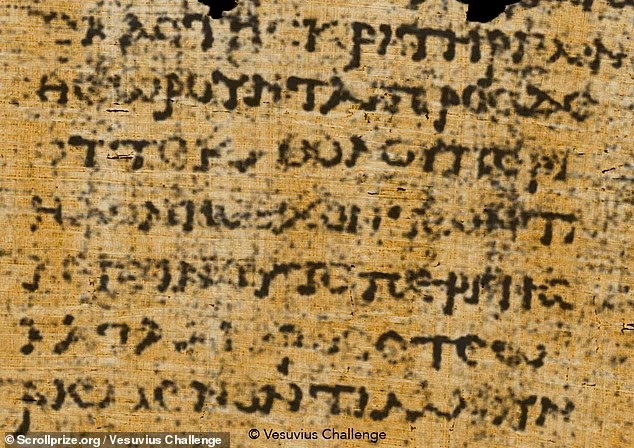A team of student researchers has made a groundbreaking discovery by deciphering Greek writing within a 2,000-year-old scroll that was burned during the 79 CE eruption of Mount Vesuvius. This achievement not only reveals a previously illegible text but also opens doors for the application of artificial intelligence (AI) in archaeology.
Unveiling History
The scroll originates from the luxury Roman villa Herculaneum and is part of the collection known as the Herculaneum scrolls, consisting of over 1,800 intact papyri preserved as carbonised ash. While previous readings focused on Athenian philosophy, particularly the teachings of Epicurus, the newly deciphered text sheds light on senses and pleasure, discussing topics like music, the taste of capers, and the color purple.
The Vesuvius Challenge
As part of the Vesuvius Challenge contest, student winners from Egypt, Switzerland, and the United States utilised machine-learning algorithms trained on scans of the papyrus to unveil the hidden text. Their efforts resulted in the deciphering of hundreds of words across more than 15 text columns, marking a significant breakthrough in understanding ancient writings.
Recognition and Rewards
For their achievement, the student researchers were awarded a grand prize of $700,000. This recognition highlights the importance of collaborative efforts and innovative approaches in unraveling the mysteries of the past.
Advancements in Technology
The success of the Vesuvius Challenge underscores the potential of AI and advanced imaging techniques in archaeological research. Computer scientist Brent Seales and his team at the University of Kentucky developed software that utilises 3-D computed tomography (CT) images to virtually map the surfaces of rolled papyri, enabling the visualisation and analysis of hidden texts.
Community Collaboration
The Vesuvius Challenge encouraged collaboration among participants, with machine-learning code and high-resolution scans shared throughout the competition. This collaborative approach fostered continual progress and innovation, ultimately leading to the deciphering of the ancient text.
Future Implications
The breakthrough in deciphering ancient scrolls could lead to further investigations at Herculaneum and other archaeological sites. With new techniques and technologies at their disposal, researchers may uncover additional hidden texts and gain deeper insights into ancient civilisations.
Looking Ahead
The success of the Vesuvius Challenge has paved the way for future endeavours in deciphering ancient texts. Plans for upcoming challenges in 2024 aim to decipher a larger portion of the scrolls, demonstrating the ongoing commitment to unraveling the secrets of the past through interdisciplinary collaboration and technological innovation.
Feature Image: First passages of Herculaneum scroll are DECIPHERED by AI: Students use program to read more than 2,000 words on charred papyrus buried by Mount Vesuvius eruption in 79AD | Courtesy: Daily Mail Online
Ancient Roman Bath Unearthed in Cologne’s Neumark: A Glimpse into Lavish Residential Living






